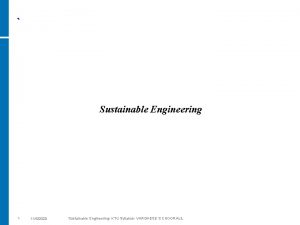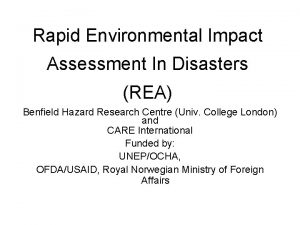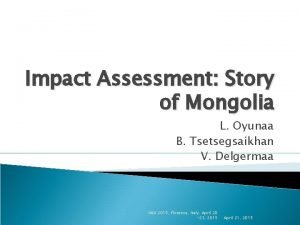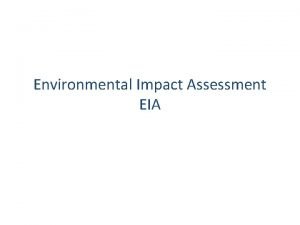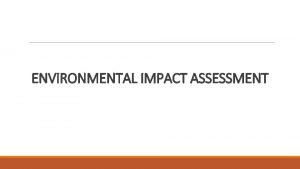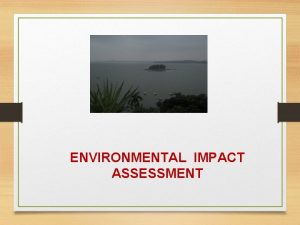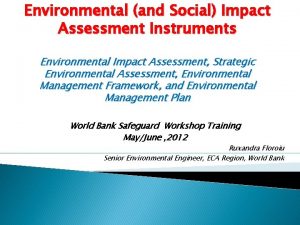Environmental Impact Assessment Definition The term environmental Impact






- Slides: 6

Environmental Impact Assessment

Definition The term ‘environmental Impact assessment (EIA)’ describes a technique and a process by which information about the environmental effects of a project is collected, and taken into account by the planning authority in forming their judgments on whether the development should go ahead or not. Other relevant definitions: • social impact assessment (SIA): discuss the effects of a project on the social and economic environment. • Strategic environmental assessment (SEA) expands EIA from projects to policies, plans and programs. • Risk assessment (RA) is related to events such as the chemicals factory explosion and nuclear power station accidents.

The purposes of environmental impact assessment: 1. An aid to decision-making Environmental impact assessment is a process with several important purposes. It is an aid to decision-making. It provides a systematic examination of the environmental effects of a proposed action, and sometimes alternatives, before a decision is taken. It is not a substitute for decision-making, but it does help to clarify some of the effects associated with a proposed development action, which should lead to more rational decision-making. The EIA process has the potential to be a basis for negotiation between the developer, public interest groups and the planning regulator. This can lead to an outcome that balances the interests of the development action and the environment.

2. An aid to the formulation of development projects Many developers, no doubt, see EIA as another obstacle to proceed with their various activities; the process can be seen as another costly and time-consuming activity in the permission process. However, EIA can be of great benefit to them, since it can provide a framework for considering location and design issues and environmental issues in parallel. EIA can be the signal to the developer of potential conflict; wise developers may use the process to eliminate negative environmental impacts, reduce local opposition and avoid costly public inquiries.

3. An instrument for sustainable development EIA is one of the instruments to achieve sustainable development, development that does not cost the Earth. Existing environmentally harmful developments have to be managed as best they can. In extreme cases, they may be closed down, but they can still leave residual environmental problems for decades. How much better it would be to mitigate the harmful effects in advance, at the planning stage, or in some cases avoid the particular development. Prevention is better than cure.

Although, there is no one exclusive approach to carry out an EIA, the following four stages could be a guide line : 1. Starting up (early stages). 2. Impact prediction (evaluation and mitigation). 3. Participation (presentation and review). 4. Monitoring and auditing (after the decision).
